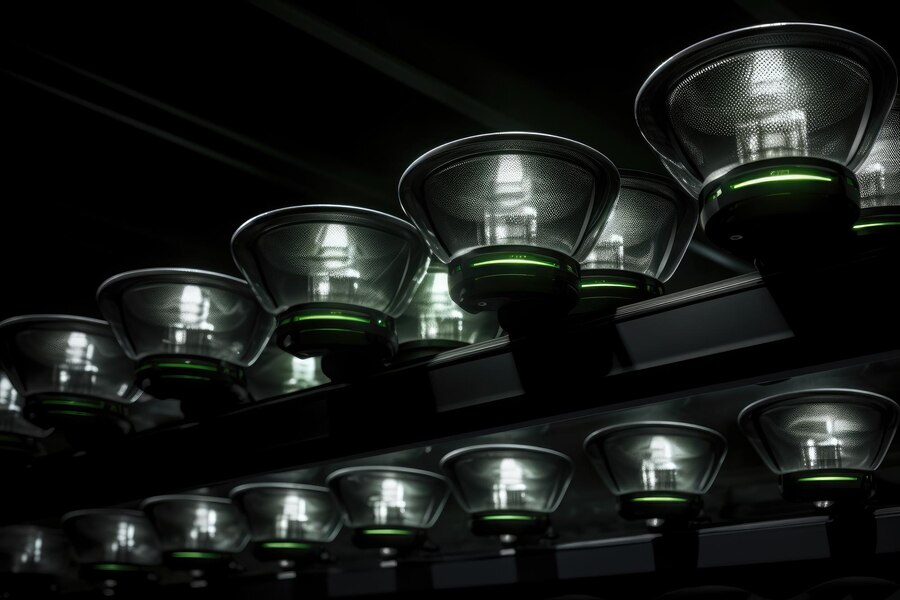LED (Light Emitting Diode) lighting has revolutionized the way we illuminate our homes, workplaces, and public spaces. With energy efficiency, durability, and environmental benefits, LED lights have become the preferred choice for consumers and businesses alike. This comprehensive guide explores the numerous advantages of switching to LED lights, highlighting how they can enhance energy savings, improve lighting quality, and contribute to a sustainable future.
Understanding LED Lights: A Brief Overview
Before delving into the benefits, it's essential to understand the basics of LED lighting technology. Unlike traditional incandescent or fluorescent bulbs, LEDs produce light through the movement of electrons in a semiconductor material. This process generates light efficiently while producing minimal heat, making LEDs highly energy-efficient and long-lasting.
Note:- Make the switch to energy-efficient LED lighting solutions with Al Arz Electrical, your trusted partner for quality Led Light Suppliers in UAE. Whether you're upgrading your home, office, or commercial space, Al Arz Electrical offers a wide range of LED lights that promise superior energy savings, durability, and lighting performance.Visit our website at Al Arz Electrical to explore our LED lighting options and learn more about how we can help you enhance your lighting environment while saving on energy costs.
How LED Lights Work
-
Semiconductor Material: LEDs use a semiconductor material (typically gallium arsenide or gallium phosphide) that emits light when current passes through it.
-
Energy Efficiency: LEDs convert a higher percentage of energy into light compared to traditional bulbs, minimizing wasted energy as heat.
-
Longevity: LED lights have a longer lifespan, often lasting tens of thousands of hours before needing replacement.
Key Benefits of Switching to LED Lights
Switching to LED lighting offers a wide range of benefits that positively impact energy consumption, lighting quality, maintenance costs, and environmental sustainability. Here are the key advantages:
1. Energy Efficiency and Cost Savings
- Lower Energy Consumption: LED lights consume significantly less energy than incandescent and fluorescent bulbs, reducing electricity bills and operational costs.
- Long-Term Savings: Although LEDs may have a higher initial cost, their energy efficiency and longevity result in substantial savings over their lifespan.
2. Extended Lifespan and Reduced Maintenance
- Longer Lifespan: LED lights can last up to 25 times longer than traditional bulbs, reducing the frequency of replacements and maintenance costs.
- Durability: LEDs are resistant to shock, vibrations, and external impacts, making them ideal for both indoor and outdoor applications.
3. Improved Lighting Quality and Flexibility
- Brightness and Color Options: LEDs offer superior brightness and color rendering compared to traditional bulbs, providing clearer and more vibrant lighting.
- Dimmable Options: Many LED lights are dimmable, allowing users to adjust brightness levels according to their preferences and needs.
4. Environmental Benefits
- Reduced Carbon Footprint: LED lights emit less greenhouse gases due to lower energy consumption, contributing to environmental sustainability and climate action goals.
- Mercury-Free: Unlike fluorescent lights, LEDs do not contain mercury, reducing environmental impact and facilitating safer disposal at the end of their lifespan.
5. Instantaneous Lighting and Design Flexibility
- Instant On: LED lights illuminate instantly without the warm-up period required by traditional bulbs, providing immediate lighting when switched on.
- Compact Design: LED technology allows for compact and versatile lighting fixtures, enabling creative and efficient lighting designs in various settings.
Considerations for Switching to LED Lights

When considering a switch to LED lighting, evaluate factors such as:
Cost Analysis and Return on Investment (ROI)
- Calculate upfront costs versus long-term savings to determine the ROI of LED lighting solutions for your specific application.
Lighting Design and Compatibility
- Assess compatibility with existing fixtures and lighting systems, considering the need for retrofitting or new installations.
Quality and Warranty
- Choose reputable LED manufacturers and suppliers that offer quality products and reliable warranties to ensure performance and durability.
Steps to Transition to LED Lighting
To effectively transition to LED lighting in your home, office, or commercial space, follow these practical steps:
Step 1: Assess Lighting Needs
- Identify areas where energy-efficient and high-quality lighting can enhance comfort, productivity, and ambiance.
Step 2: Research Products and Suppliers
- Explore LED lighting options, compare specifications, and read customer reviews to select suitable products and reliable suppliers.
Step 3: Plan Installation and Retrofitting
- Consult with lighting professionals or contractors to plan installation, retrofitting existing fixtures, and optimizing lighting design.
Step 4: Monitor Performance and Energy Savings
- Monitor energy consumption and lighting performance after installation to verify savings and operational efficiency.
Conclusion
Switching to LED lights offers numerous benefits, ranging from energy efficiency and cost savings to improved lighting quality and environmental sustainability. By embracing LED technology, consumers and businesses can reduce energy consumption, lower maintenance costs, and contribute to a greener future. Evaluate your lighting needs, consider the advantages of LED lighting, and take proactive steps to transition to this advanced lighting solution for long-term benefits and enhanced lighting experiences.
Note:- To read more articles visit on daddycow.











Comments (0)